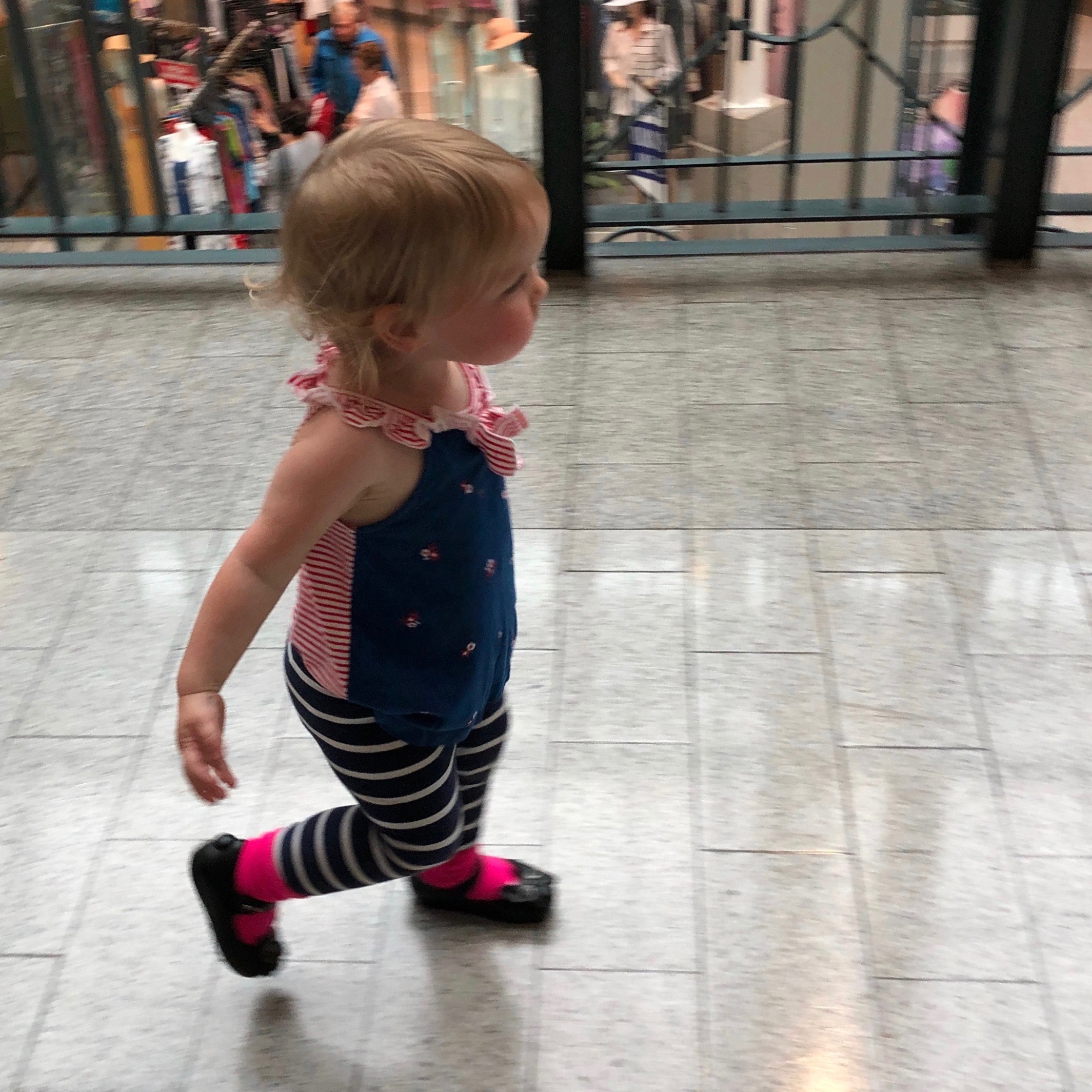They stagger, they fall, but they move better than we do

If learning Spinefulness has a downside, it’s this: once you can see out of balance posture, you can’t un-see it.
Sit on a park bench to people-watch, and you’ll see a pain parade.
Yes, there’s the occasional delight of someone walking with ease and grace, but for the most part, old and young, it’s a procession of heads and pelvises poked forward, rounded upper backs, flabby buttocks, stiff shoulders, and, more often than not, a pronounced backwards lean that defies physics.
It can all get a bit depressing, at least until someone in the “I’m in Balance” club shows up.
They’re always very short, and the youngest among them are inclined to stagger, but they’re uniformly a joy to watch.
Yes, I’m talking about toddlers and very young children, who successfully carry out-sized heads on their slender necks. When they bend to inspect a pebble, their butts go back and their spines stay long. They have weight in their heels. They tilt slightly forward when they walk, and they push off from the toe of their back foot.
Most of all, they look relaxed, at least when they’re not being frustrated by adults.
Every time I see a toddler in balance, I relax a little more too. They have so many enchanting qualities: their joie de vivre, their pride in their accomplishments, their keen interest in their surroundings.
But most of all they remind me that easy, relaxed pain-free posture is neither strange nor new. We all moved this way as toddlers. We’ve all inhabited a friction-free body, in line with gravity.
That means we don’t have to impose a new discipline of Spinefulness on our bodies. We just have to remember it, and relax.
That’s where Spinefulness comes in.